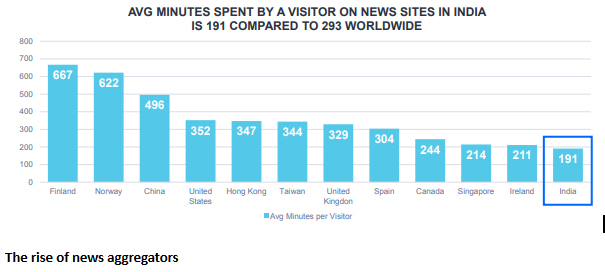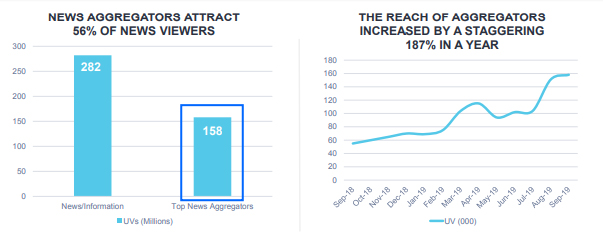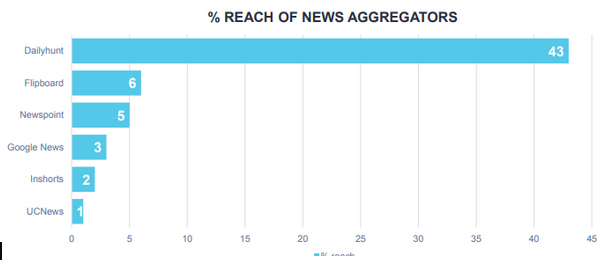MUMBAI: India is a large, chaotic, noisy democracy at work. And nothing encapsulates this better than the desire for news in Indians, be it through print, broadcast or even digital. Digital news in India, as per comScore’s latest report, receives an average of 282 million unique visitors (UVs) every month, making India the second-largest online news consuming nation in the world after China.
Digital news is also the most popular content category by reach, having a 96 per cent reach, just above social media, entertainment and retail at 95, 95, and 94 per cent. News penetration in India is actually higher than other key populations like China and the USA, says the report titled ‘Trends in Online News Consumption,’ that analysed data for the month of September.

However, despite the high penetration of digital news in India, the average time an Indian spends on news sites at 191 minutes is much lower that countries like Finland (667), China (496), and the US (352).

The rise of news aggregators
Thanks, perhaps, to the high-demand of news in India and to comparatively lower time spent on news sites, the biggest players in news category are news aggregators. Data from comScore’s report shows that out of the 282 UVs for the month of September, nearly 158 million came through news aggregators. Together, news aggregators recorded a staggering 187 per cent growth in 2019.

Among news aggregators, Dailyhunt remains the undisputed market leader, having 43 per cent market reach. Flipboard, Newspoint, Google News, Inshorts, and UCNews have carved out a space for themselves but none of them is in a position to challenge Dailyhunt’s current market domination.

Mobile leads the way
The popularity of news aggregators is also aided by another peculiar Indian market trait, the popularity of mobile screen over desktop. Over 90 per cent of the total time Indians spends on digital news sites is on mobile screens with desktop compromising just below 10 per cent. The compatibility of news aggregators on mobile screens is aiding their growth.

However, the same poses challenges for advertisers looking to monetise the popularity of digital news. Desktop interface is more compatible for advertisings than a mobile screen. News aggregators, currently, advertise by strategically placing branded content and promotions in between important stories.
Vernacular shows promise
Another feature that distinguishes Indian digital news market from other key markets like China, USA, Brazil, Canada, and the UK is the tremendous content diversity on news sites in India. While all other key digital news markets are one language dominated, in India, a huge amount of traffic to news sites comes from vernacular languages.

News, but in video format
The report also finds that for news sites, video remains the best option to engage consumers. In the last one year, top news sites have increased their video output vastly, and have benefitted from it.

Also, You Tube is the most preferred partner for growth in news videos. The study finds that news sites benefit tremendously by contributing videos to You Tube. The report finds that out of the total 85 million UVs on India Today Group site, 84 million came from You Tube. For Times Internet, the figure was 25 million UVs out of the total of 33 million UVs.

News is here to stay
If there is one take away from the report, then it is that news, in whatever format, is here to stay. Also, in India, digital news is showing growth alongside a healthy growth in broadcast news, without much harm to print news.
However, for news sites to remain relevant in a fast changing Indian digital news market, videos and effective partnerships with social media like You Tube and Facebook, is critical.
 Follow Us
Follow Us





